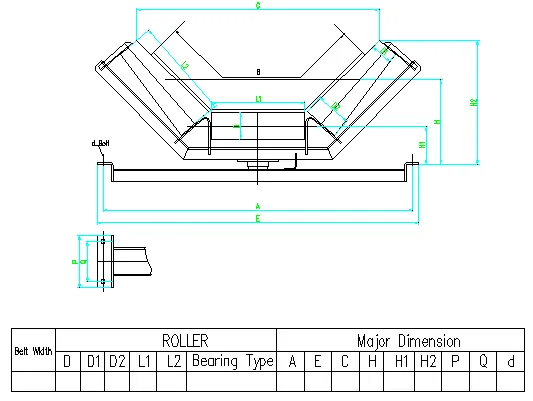 Afrikaans
Afrikaans  Albanian
Albanian  Amharic
Amharic  Arabic
Arabic  Armenian
Armenian  Azerbaijani
Azerbaijani  Basque
Basque  Belarusian
Belarusian  Bengali
Bengali  Bosnian
Bosnian  Bulgarian
Bulgarian  Catalan
Catalan  Cebuano
Cebuano  Corsican
Corsican  Croatian
Croatian  Czech
Czech  Danish
Danish  Dutch
Dutch  English
English  Esperanto
Esperanto  Estonian
Estonian  Finnish
Finnish  French
French  Frisian
Frisian  Galician
Galician  Georgian
Georgian  German
German  Greek
Greek  Gujarati
Gujarati  Haitian Creole
Haitian Creole  hausa
hausa  hawaiian
hawaiian  Hebrew
Hebrew  Hindi
Hindi  Miao
Miao  Hungarian
Hungarian  Icelandic
Icelandic  igbo
igbo  Indonesian
Indonesian  irish
irish  Italian
Italian  Japanese
Japanese  Javanese
Javanese  Kannada
Kannada  kazakh
kazakh  Khmer
Khmer  Rwandese
Rwandese  Korean
Korean  Kurdish
Kurdish  Kyrgyz
Kyrgyz  Lao
Lao  Latin
Latin  Latvian
Latvian  Lithuanian
Lithuanian  Luxembourgish
Luxembourgish  Macedonian
Macedonian  Malgashi
Malgashi  Malay
Malay  Malayalam
Malayalam  Maltese
Maltese  Maori
Maori  Marathi
Marathi  Mongolian
Mongolian  Myanmar
Myanmar  Nepali
Nepali  Norwegian
Norwegian  Norwegian
Norwegian  Occitan
Occitan  Pashto
Pashto  Persian
Persian  Polish
Polish  Portuguese
Portuguese  Punjabi
Punjabi  Romanian
Romanian  Russian
Russian  Samoan
Samoan  Scottish Gaelic
Scottish Gaelic  Serbian
Serbian  Sesotho
Sesotho  Shona
Shona  Sindhi
Sindhi  Sinhala
Sinhala  Slovak
Slovak  Slovenian
Slovenian  Somali
Somali  Spanish
Spanish  Sundanese
Sundanese  Swahili
Swahili  Swedish
Swedish  Tagalog
Tagalog  Tajik
Tajik  Tamil
Tamil  Tatar
Tatar  Telugu
Telugu  Thai
Thai  Turkish
Turkish  Turkmen
Turkmen  Ukrainian
Ukrainian  Urdu
Urdu  Uighur
Uighur  Uzbek
Uzbek  Vietnamese
Vietnamese  Welsh
Welsh  Bantu
Bantu  Yiddish
Yiddish  Yoruba
Yoruba  Zulu
Zulu Understanding Troughing Idlers and Their Role in Conveyor System Efficiency
Understanding Troughing Idlers Essential Components in Conveyor Systems
In the world of material handling and automation, troughing idlers play a critical role in ensuring the efficient transport of bulk materials across varied industrial sectors. These components are essential for conveyor systems, serving not only structural purposes but also enhancing operational efficiency. This article will explore the design, functionality, applications, and best practices associated with troughing idlers.
What are Troughing Idlers?
Troughing idlers are cylindrical components that support the conveyor belt as it moves materials. They are designed to create a trough shape, which helps to contain and guide the material being transported, preventing spillage and supporting the belt on its journey. Typically made from robust materials such as steel or rubber, troughing idlers are engineered to withstand harsh operational environments and heavy loads.
Design Features
Troughing idlers come in different configurations, with the most common being the three-roll idler setup. This design comprises three horizontal rolls set at an incline relative to the horizontal plane. The angle of these rolls can vary but is typically between 30 to 45 degrees, creating a trough that effectively holds the transported material. Other configurations, such as two-roll and five-roll troughing idlers, are also used depending on the specific requirements of the conveyor system.
The rollers themselves are mounted on a durable frame, which is anchored securely to the conveyor structure. This stability is crucial for ensuring consistent tension and alignment of the conveyor belt, which mitigates wear and tear and prolongs the life of both the belt and the idlers.
Functionality
The primary function of troughing idlers is to support the conveyor belt while maintaining the structural integrity of the system
. There are several ways in which they optimize performance1. Material Containment The trough shape helps contain bulk materials, reducing spillage and waste, which can be detrimental to both productivity and the environment.
2. Reduced Friction Properly designed idlers minimize friction between the belt and the supporting rollers, which decreases energy consumption and extends the lifespan of the conveyor system.
3. Load Distribution By distributing the load evenly across the idlers, the conveyor system can handle heavier weights without compromising efficiency or causing damage to its components.
troughing idlers

4. Ease of Maintenance Many modern troughing idler designs include features that facilitate easy maintenance and replacement, ensuring minimal downtime.
Applications
Troughing idlers are widely used across various industries, including mining, agriculture, and manufacturing. In mining operations, they transport materials like coal, ore, and sand over long distances, often in harsh terrains. In agriculture, troughing idlers facilitate the movement of grain and fertilizers. Manufacturing industries utilize them for transporting raw materials and finished products seamlessly through the production line.
Their versatility and robust design make them an indispensable component in any setup that involves bulk material handling.
Best Practices
To ensure the longevity and efficiency of troughing idlers, companies should adhere to several best practices
1. Regular Inspections Frequent checks for wear and damage can help identify potential issues before they escalate into costly repairs or replacements.
2. Lubrication Keeping rollers well-lubricated reduces friction and wear, enhancing performance and lifespan.
3. Proper Alignment Ensuring that idlers are correctly aligned with the conveyor belt prevents misalignment issues, which can cause significant operational disruptions.
4. Load Management Understanding the load capacity of troughing idlers is essential. Overloading can lead to premature wear or even failure of the idlers.
Conclusion
Troughing idlers are vital components of conveyor systems, contributing to efficient material handling across various industries. Understanding their design, functionality, and applications can help industries optimize their operations and reduce costs. By implementing best practices for maintenance and management, organizations can ensure that their conveyor systems operate smoothly, thus enhancing productivity and minimizing downtime. As industries continue to evolve, the role of troughing idlers will remain crucial in the advancement of efficient material handling solutions.
-
Trusted Conveyor Solutions from Leading Conveyor Idler Roller ManufacturersNewsJun.27,2025
-
Reliable Return Idler Solutions for Efficient Belt Conveyor SystemsNewsJun.27,2025
-
Precision Conveyor Accessories for Streamlined Material HandlingNewsJun.27,2025
-
High-Quality Belt Conveyor Idler Solutions for Efficient Material HandlingNewsJun.27,2025
-
High-Performance Belt Conveyor Pulleys for Reliable Material HandlingNewsJun.27,2025
-
Enhancing Material Handling EfficiencyNewsJun.27,2025





























